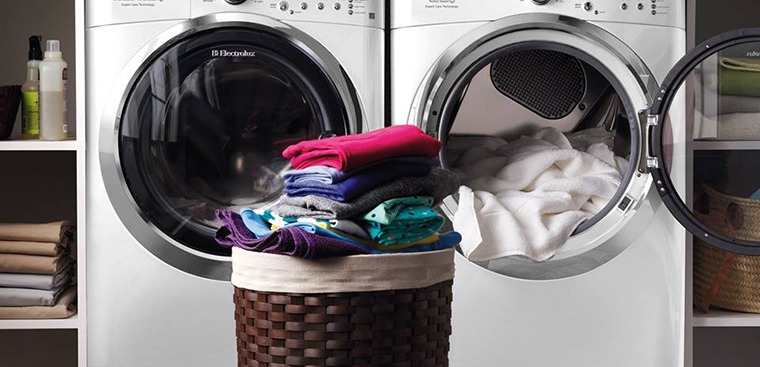Monday, 29/12/2025 | 18:30 GMT+7

Wash clothes on the shortest cycle (often referred to as "quick wash") that's practical for your needs. This means less water, heated to a lower temperature and a shorter spin cycle to save water and energy. Bonus - this cycle causes less damage to your clothes over time so helps them last longer.
Use a cold water or 30°C cycle where possible. It's only for particularly dirty clothes, bad stains or underwear that you are likely to need warmer temperatures.
Soak heavily soiled items before washing, and rub collars or other stains with household soap. There's nothing worse than having to repeat a wash because stains didn't come out.
Wait until you have a full load before washing. Naturally, if you're running out of socks you might have to put a load on (in which case you can use the quick wash mode as recommended), but otherwise, it's best to wait for a full basket to avoid wasting water.
Similarly, bath sheets are typically heavyweight cotton and excessively large, so consider choosing standard lightweight bath towels to save on energy.
Where possible, use a high spin speed so clothes come out of the washing machine almost dry, with little need for tumble drying. And, of course, when it comes to drying where possible hang your clothes up rather than using a dryer.
Include occasional hot washes if you mainly do low-temperature ones. This will get rid of bacteria and prevent the build-up of odors in your machine.
Washing your clothes is only half the story - what about drying them? Read on to find out how to save energy when drying your clothes.

Dry similar fabrics together.
Clean the filters regularly to make sure they're free from fluff so your dryer will operate more efficiently.
Use auto-dry rather than a timed cycle, that way you won't be using more energy than required.
Don't overload your dryer. There needs to be a bit of room for the hot air to move around.
Give all items a good shake when transferring from the washer to the dryer. This helps remove wrinkles and prevents tangled, twisted items from taking longer to dry.
Try to do all your drying in one day; a second or third load can take advantage of the heat that has already built up in the machine.
Remove clothes from your dryer once they are dry, as modern machines will continue to rotate to prevent creasing, and therefore use more energy.
If your machine is vented, check the outside vent is in good working order and clear it of any dust or debris. This will ensure both safety and efficiency.
Keep your dryer in a warm room. It will take longer to heat up if kept in an outdoor, unheated shed.
According to Uswitch.com








 Webinar 2: “Financial Support for Energy Efficiency Enterprises – Opportunities and Challenges”
Webinar 2: “Financial Support for Energy Efficiency Enterprises – Opportunities and Challenges”
 Vietnamese enterprises achieve green growth and cut costs through energy efficiency
Vietnamese enterprises achieve green growth and cut costs through energy efficiency
 Capacity Building for Program Implementing Entity
Capacity Building for Program Implementing Entity
 Enhance Energy Efficiency Knowledge for Managers of Cement Industrial Enterprises
Enhance Energy Efficiency Knowledge for Managers of Cement Industrial Enterprises
 Capacity building for participating financial institutions of the VSUEE Project
Capacity building for participating financial institutions of the VSUEE Project
 Capacity building for participating financial institutions in Ho Chi Minh City
Capacity building for participating financial institutions in Ho Chi Minh City
 Strengthening capacity for energy management officers of local government agencies
Strengthening capacity for energy management officers of local government agencies